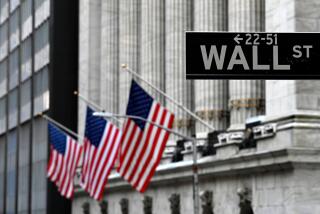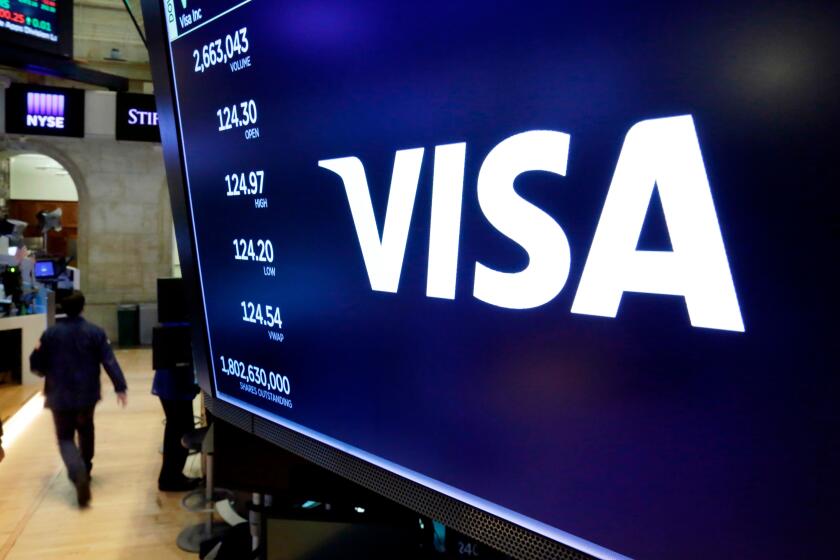How Many Funds Do You Need?
Betcha wish weâd answer that question. Itâs a puzzler.
Academic research says you can build a sufficiently diversified portfolio with just 20 stocks, but itâs not unusual for investors to own 1,000 different securities through 10 mutual funds. Yet a fund with 130 holdings can lose 25% in a quarter. That hardly seems like the result of good diversification.
So do you need two stock funds? Eight? Fourteen?
Take your pick. Fact is, the answer to the question isnât a number, itâs a process. Think of it as an essay question, not a multiple-choice test.
But to begin, figure out what scares you most:
a) Losing 10% of your assets in a month;
b) Killing your shot at top returns;
c) Needing $100,000 at a specific time for a specific purpose (retirement, kidâs college, etc.) and falling $25,000 short.
Your answer to this question will help determine how many funds you should own. Generally, the more funds in a portfolio, the lower the short-term volatility--ups and downs--and the narrower the range of long-term results.
On average, short-term volatility declines dramatically as you add the first four equity funds, falls further with the next four or five funds, and then begins to level off. For many investors, however, short-term volatility matters less than how many dollars will be there when all is said and done. In other words, the destination is more important than the trip.
Increasing the number of funds narrows the range of probable destinations (see accompanying graphic).
Of course, a narrow range can be friend or foe, depending on how you answered the quiz. If youâre aiming to beat the market, youâd be more interested in the top line of the graph. The more funds, the worse the odds of making the big bucks. If, however, your biggest fear is not having enough money to meet your goals, the bottom line will be more relevant. More funds equals more certainty.
*
Excerpted from the June 1997 issue of Morningstar Investor.
(BEGIN TEXT OF INFOBOX / INFOGRAPHIC)
Closing the Gap
Up to a point, An investor aiming for $100,000 increases the likelihood of hitting that target by holding more funds.
*
Three funds in portfolio Likely performance range: $85,00-$116,000
*
17 funds in portfolio Likely performance range: $92,000-$108,000
Note: $125,000 ending portfolio value based on $51,382 initial investment five years ago.
(BEGIN TEXT OF INFOBOX / INFOGRAPHIC)
Methodology
We gathered our data by randomly constructing 200 domestic-equity-fund portfolios for each portfolio size (200 one-fund portfolios, 200 two-fund portfolios, etc.).
We also calculated the likely ending portfolio value for each portfolio size. (See graph.) We began by assuming a target value of $100,000. The average domestic-equity fund would have needed an initial investment of $51,382 five years ago to reach that target. Based on that initial investment, we show the likely range of performance for each portfolio size. Thereâs a 95% chance that the ending value would fall between the upper and lower values shown on the graph.
--Morningstar
(BEGIN TEXT OF INFOBOX / INFOGRAPHIC)
About Morningstar
Morningstar Inc. is a privately owned company founded in 1984 to provide investors with independent information to help them make investment decisions. Its star rating system is used by financial planners, cited in advertisements and used as a guide by investors and the media alike. As it has grown, the Chicago-based companyâs staff of analysts, writers and programmers has introduced new print and software products for both the individual and the professional investor. These include the investorsâ guides Morningstar Mutual Funds and Morningstar Investor, and CD-ROMs âMorningstar Principia for Mutual Fundsâ and âMorningstar StockTools.â To learn more about Morningstar and its products, call (800) 735-0700 or visit its Web site at https://www.morningstar.net
By the way, the name âMorningstarâ is a reference to the last line of Thoreauâs âWaldenâ: âThe sun is but a morning star.â
(BEGIN TEXT OF INFOBOX / INFOGRAPHIC)
Morningstar Categories
Morningstarâs categories are intended to distinguish funds by what they own as well as by their investment objectives and styles.
While traditional fund definitions have often simply identified a fundâs investment goals based on the wording in the fund prospectus, Morningstar looks at the actual stocks they have held to decide which category they should fall under.
If the fund is new and there is no data on its holdings, the choice is based on the best information available. Morningstar will change a category assignment based on new information.
Domestic Equity Funds
General domestic equity funds are placed in a category based on the style and size of the stocks they own. The style and size parameters are based on the divisions used in the investment style box:
Domestic Specialty Funds
LG: Large Growth
MG: Mid-Cap Growth
SG: Small Growth
LB: Large Blend
MB: Mid-Cap Blend
SB: Small Blend
LV: Large Value
MV: Mid-Cap Value
SV: Small Value
*
Growth: (relative price-to-earnings + relative price-to-book) greater than 2.25
Blend: (relative P/E + relative P/B) greater than or equal to 1.75 but less than or equal to 2.25
Large: average median market capitalization of greater than $5 billion
Medium: average median market capitalization greater than or equal to $1 billion but less than or equal to $5 billion
Small: average median market capitalization of less than $1 billion
SP Specialty--Precious Metals
SN Specialty--Natural Resources
ST Specialty--Technology
SU Specialty--Utilities
SH Specialty--Health
SF Specialty--Financial
SR Specialty--Real Estate
SC Specialty--Communications
SS Specialty--Unaligned
DH: Domestic Hybrid: used for funds with stock holdings of greater than 20% but less than 70% of the portfolio.
CV: Convertible Bond: used for funds that invest primarily in bonds and preferred stocks that can be converted into common stocks.
International Equity Funds
Equity funds with 40% or more of their equity holdings in foreign stocks (on average, more than three years) are placed in the international equity category.
ES: Europe: at least 75% of stocks invested in Europe
JS: Japan: at least 75% of stocks invested in Japan
LS: Latin America: at least 75% of stocks invested in Latin America
DP: Diversified Pacific/Asia: at least 65% of stocks invested in Pacific countries, with at least an additional 10% of stocks invested in Japan.
PJ: Pacific/Asia ex. Japan: at least 75% of stocks invested in Pacific countries, with less than 10% of stocks invested in Japan
EM: Diversified Emerging Markets: at least 50% of stocks invested in emerging markets
FS: Foreign: an international fund having no more than 10% of stocks invested in the U.S.
WS: World: an international fund having more than 10% of stocks invested in the U.S.
IS International Hybrid: used for funds with stock holdings greater than 20% but less than 70% of the portfolio, where 40% of the stocks and bonds are foreign.
Bond Funds
Funds with 70% or more of their assets invested in bonds are classified as bond funds. Bond funds are then divided into two main groups: taxable bond and municipal bond
GL: Long-Term Government: at least 80% of bond portfolio invested in government issues with a duration of greater than six years or average effective maturity of greater than 10 years.
CI: Intermediate-Term Government: at least 80% of bond portfolio invested in government issues with a duration of greater than or equal to 3 1/2 years and less than six years or average effective maturity of greater than or equal to four years and less than 10 years.
GS: Short-Term Government: at least 80% of bond portfolio invested in government issues with a dur ation of greater than or equal to one year and less than 3 1/2 years or average effective maturity of greater than or equal to one year and less than four years.
CL: Long-Term Bond: focuses on corporate and other investment-grade issues with an average duration of more than six years or an average effective maturity of more than 10 years.
Intermediate-Term Bond: focuses on corporate and other investment-grade issues with an average duration of more than 3 1/2 but less than six years or an average effective maturity of more than four but less than 10 years.
SC: Short-Term Bond: focuses on corporate and other investment-grade issues with an average duration of more than one but less than 3 1/2 years or an average effective maturity of more than one but less than four years.
UB: Ultrashort Bond: used for funds with an average duration or an average effective maturity of less than one year. This category includes general corporate and government bond funds and excludes any international, convertible, multi-sector and high-yield bond funds.
IB: International Bond: at least 40% of bonds invested in foreign markets.
High-Yield Bond: at least 65% or more of assets in bonds rated below BBB
MU: Multi-Sector Bond: used for funds that seek income by diversifying their assets among several fixed-income sectors, usually U.S. government obligations, foreign bonds and high-yield domestic debt securities.
Municipal Bonds
MS: Short-Term (national and single-state): an average duration of less than 3 1/2 years or an average maturity of less than four years.
ML: National Long-Term: an average duration of more than six years or average maturity of more than 10 years.
SL: Single-State, Long-Term: an average duration of more than six years or average maturity of more than 10 years.
MI: National, Intermediate-Term: an average duration of more than 3 1/2 years but less than six years, or average maturity of more than four years but less than 10 years
SI: Single-State, Intermediate-Term:
an average duration of more than 3 1/2 years but less than six years or average maturity of more than four years but less than 10 years.
(BEGIN TEXT OF INFOBOX / INFOGRAPHIC)
Afraid of the Bear?
In an attempt to predict which funds could be expected to hold up best in the next bear market, Morningstar Inc. studied fund performance over the last few decades. One good predictor, the researchers found, was how funds performed during the months in which the Standard & Poorâs 500 index (which measures the performance of the stocks of the nationâs largest companies and thus expresses most of the marketâs value) lost more than 3%.
Funds with sufficient history to receive a âbear market rankâ on the following pages will show a number based on how well the fund performed in the 10 months since 1990 that the S&P; 500 lost more than 3%.
Although almost all funds lost value in those months, certain categories of funds did better than others. Below is a ranking of those equity-fund categoriesâ performance for those 10 months relative to the S&P; 500. (Categories are defined below.)
Prediction is always an iffy business, of course, and the next bear market may be unlike any previous one.
Precious metals: +40.08%
International hybrid: +33.45
Latin America stock: +29.40
Utilities: +29.23
Domestic hybrid: +26.10
Convertibles: +25.09
Real estate: +19.13
Natural resources: +18.48
Europe stock: +14.54
Mid-cap value: +12.55
Small-cap value: +10.72
Large-cap value: +8.20
Large-cap blend: +7.94
Mid-cap blend: +7.29
Foreign stock: +4.76
World stock: +3.69
Small-cap blend: +2.91
Large-cap growth: +1.07
S&P; 500: 0.0
Health: -0.10
Unaligned: -0.75
Financial: -0.83
Technology: -4.75
Communications: -5.17
Diversified emerging markets: -5.18
Mid-cap growth: -6.99
Diversified Pacific/Asia: -10.33
Japan stock: -11.03
Small growth: -12.05
Pacific/Asia except Japan: -12.30
More to Read
Inside the business of entertainment
The Wide Shot brings you news, analysis and insights on everything from streaming wars to production â and what it all means for the future.
You may occasionally receive promotional content from the Los Angeles Times.









